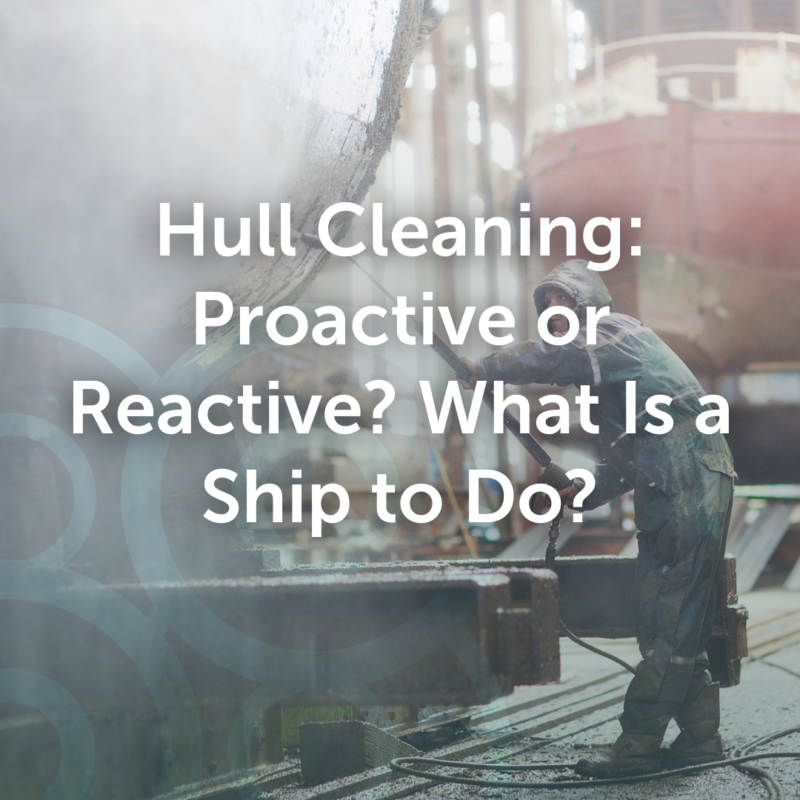Biofouling Management: The Overlooked Emissions Solution the Industry Can’t Afford to Ignore
Shipping is under pressure to decarbonise, yet biofouling management—one of the most immediate and cost-effective solutions—remains underused.

This article first appeared in The Maritime Advocate issue 888.
As the maritime industry intensifies efforts to decarbonise due to growing regulatory pressure and looming climate deadlines, we cannot afford to overlook any of the tools at our disposal to improve fuel efficiency and curb carbon emissions. Despite this, one of the most impactful and immediately available short-term solutions available to us continues to be overlooked, in the public eye at least – biofouling management.
At the 83rd session of the International Maritime Organization’s Marine Environment Protection Committee (MEPC) in April, the global spotlight was understandably fixed on progress toward reducing greenhouse gas emissions. However, another decision of lasting significance emerged, which was an ambitious agreement to develop a legally binding convention on the control and management of ships’ biofouling.
This marks a key turning point for the industry. For the first time, biofouling is being formally recognised not only as a cause for invasive species, but also as a significant contributor to emissions and hull inefficiency. While implementation is still years away, with a convention likely not adopted before 2029, the decision marks a key shift. It should also have sent a clear signal on the importance of collective action on biofouling management on a global scale. The question now is whether shipowners will wait for enforcement or act now to capture the operational and environmental benefits, which are already within reach and do not require any legislation.
Why biofouling demands immediate attention
The stark reality is that unmanaged hull fouling can increase fuel consumption by 20% to 40%. It’s clearly an emissions driver of real significance, particularly when compared to the very significant investments made in clean-tech solutions that promise to deliver single digit fuel consumption savings. However, despite its significant impact, biofouling has not received the same regulatory urgency or priority until this point.
It is true that regional frameworks, such as those in Australia and New Zealand have established and enforced strict biofouling rules to address invasive species in those jurisdictions. These strict measures place significant obligations on vessels operating in their waters, with punitive repercussions for those who do not comply. This is very welcome step, but so far, the measures taken by these maritime administrations are the exception rather than the rule. What is more, the absence of a consistent global standard has left shipowners navigating a fragmented regulatory landscape. This also risks leading to uneven enforcement and limited access to proven in-water cleaning solutions.
To date, this inertia persists despite the availability of proven, cost-effective technologies that could simultaneously improve environmental performance, reduce fuel costs, and enhance vessel ratings.
A key distinction in biofouling management is between reactive and proactive approaches. Reactive cleaning – such as in-water cleaning or hull scraping – tackles fouling only after it has already built up, by which point vessels are already paying the price in higher fuel use, cleaning costs, downtime, and the risk of penalties. By contrast, proactive measures – coatings and integrated antifouling systems – limit fouling before it forms. The upside is measurable: avoiding unmanaged growth can prevent the 20–40% increase in fuel consumption associated with fouled hulls, while also reducing the frequency and cost of cleaning interventions. Despite these benefits, many operators still rely on reactive methods because proactive options were historically tied to newbuild decisions. That is changing. Retrofit-friendly, quick-turnaround solutions are now available, offering fast ROI and applicability to ships already in service. As pressure to minimise fouling grows and more vessels are built or upgraded with proactive systems, reliance on reactive cleaning will diminish, and the transition to a more proactive global fleet is on the horizon.
The business case for clean hulls
Biofouling management is far more than a compliance concern, it’s a performance strategy for your vessel and your fleet. Clean hulls mean reduced drag, lower fuel consumption, extended drydock intervals, and improved environmental performance. To make a compelling case for why action is needed today – instead of waiting years for a global agreement to enter into force – we need to reframe the narrative, as biofouling is about so much more than hull maintenance. It is a decarbonisation tool, a compliance enabler, and a competitive advantage. Even more importantly, it’s a solution that can be deployed today.
At Cathelco, we believe biofouling management must be fully integrated into a vessel’s environmental strategy. From hull protection to wastewater and resource management, our solutions help shipowners take a proactive approach to sustainability, delivering measurable gains above and below the waterline.
Looking ahead
The development of a binding international framework for biofouling is a significant regulatory milestone, and a sign that the IMO and Member States are treating this issue with the seriousness it deserves, for which they deserve praise. However, the path to implementation is undeniably long. There is an opportunity to act now and good reasons to do that can be measured in both carbon savings and dollar savings.
Proactive shipowners who invest in biofouling management today won’t just futureproof their operations, they’ll gain a competitive advantage, improve their sustainability ratings, and help accelerate the maritime sector’s contribution to global climate goals.
With MEPC 83 setting the stage and the industry beginning to rally, the case for action has never been clearer. Biofouling should no longer be positioned as an afterthought, but rather an important piece of the solution in shipping’s decarbonisation journey.
